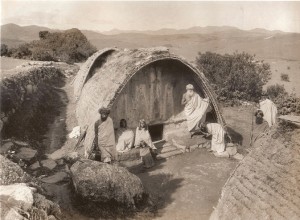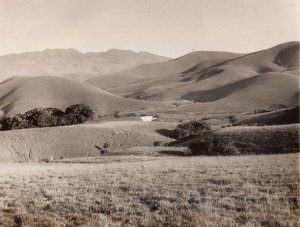Registered with the Registrar of Newspapers for India under R.N.I 53640/91
Vol. XXVI No. 21, February 16-28, 2017
On the trail of Albert Penn
by Christopher Penn
My great grandfather, A.T.W. Penn had worked from 1865 to 75 for Nicholas Brothers studio which was the most important commercial photographer in the Madras Presidency in the second half of the 19th Century with studios in Madras and Ootacamund.
John and James Perratt Nicholas, the founders of the studio, were the sons of Llewellyn Nicholas, a ship’s master. Their sister Emma married a clock-maker and photographer called John Parting, who left England for Ceylon, where he set up a daguerreotype studio. John and James Perratt Nicholas followed them, but John went on to Madras where he opened a photographic studio in 1857. James Perratt joined him four years later and in 1863 married Ellen Isabella Higginbotham, the daughter of Abel Joshua Higginbotham.
Higginbotham has been orphaned when very young and spent a few years as a seaman before joining an unprofitable printer and publisher in Madras owned by the Wesleyan missionaries. He acquired the business in 1844 and relaunched it under his own name. It quickly became the leading bookshop in the Madras Presidency. It held an unequalled range of books for sale or for reading from its library, which attracted both the general public and those in high office. In March 1859, in a letter to the historian Lord Macaulay, Lord Trevelyan, then Governor of Madras, wrote “Among the many elusive and indescribable charms of life in Madras city, is the existence of my favourite book shop Higginbotham’s on Mount Road. In this bookshop I can see beautiful editions of the works of Socrates, Plato, Euripides, Aristophanes, Pindar, Horace, Petrarch, Tasso, Camoyens, Calderon and Racine. I can get the latest editions of Victor Hugo, the great French novelist. Amongst the German writers, I can have Schiller and Goethe. Altogether a delightful place for the casual browser and a serious book lover.”

By 1865, the brothers had studios in Madras and Ootacamund and, for two years, one in England to which James Perratt and his wife established, when they took a break there. It was at that time that he probably met Albert Penn.
Penn was born in 1849 in Street in Somerset. He left home before he was 12 and the next thing we know for certain is that he landed in Madras in 1864 when he was just 15 years old. He was already a competent photographer and one assumes that after leaving home he had found work in a photographic studio in London, had met James Perratt Nicholas and been employed by Nicholas Brothers, who paid his passage out to India, to work for them for at least 10 years.
In 1865 he was sent up to run the Nicholas Brothers’ studio in Ooty, where he was to live for almost half a century. Interest in ethnology and the wider field of anthropology was intense at the time and photographers, to quote John Falconer, the curator of photographs at the British Library, “felt the need to capture images of cultures rapidly changing and often disintegrating before the impact of an alien civilisation and technology.”
Penn is now best known as an ethnographic photographer. The immediacy of the image in his photographs of the Toda people is remarkable; and this is combined in pictures such as ‘Toda Mund’ and ‘A wayside view’ with a description of the way people lived and worked. The former shows a Toda girl greeting an elder by lifting his foot to her forehead in obeisance. It has the detail and feeling of repose that one finds in a Dutch interior painting of the 18th Century. The latter, at first glance no more than that a scenic view, but closer observation shows that Penn has composed a picture which shows the steps in manufacture of a wicker basket and, on the upper right hand side, the way that rattan mats were made.

In 1875 Penn acquired the Ootacamund branch of Nicholas & Company, as Nicholas Brothers had become, and started under his own name. By that time the Nicholas’ Studios had built a large stock of photographs of South India. The sea face at Fort St. George, a catamaran being launched off the beach in Madras and another picture or a masula boat in the same spot; photographs of the bathing place in Coutallam and of the second Fall, and so on.
1875 was a bad time for Penn to acquire the business because 1876-78 were years of one of the greatest famines the sub-continent had experienced. Unlike other Viceroys before or after him, Lord Lytton corresponded personally with the Queen Victoria. On August 6, 1877 he wrote: Madam, I grieve to say that, as regards southern India, our prospects have unexpectedly become very serious since I had last the honour of writing to Your Majesty. The situation in Madras is most alarming and critical. In Mysore, it is even worse. The failure of the monsoon has been almost universal throughout the distressed districts … (and still), the famine spreads, and increases daily, with all its concomitant horrors of cholera and other diseases, threatening to assume the most terrible and as yet unheard of proportions.”
There was no business in Ooty that year. The Governor and Council stayed in Madras. So Penn travelled to Bangalore to photograph the army and he took his camera to the famine relief kitchens, publishing a series of photographs which, he said “will give a more vivid idea of the severity of the famine in South India than the most elaborate official report or newspaper article.”
In 1878 Penn returned to England after14 years to introduce his wife to his family and update himself on photographic techniques. He was not to travel back to England again for 35 years.
Back in Ootacamund from 1878, Penn became known both for landscapes, views of the skies of the Nilgiris, cloudscapes, as he called them, and portraiture. The 1890s saw the rise of the amateur as new equipment and materials made the whole process much easier and swept away the mystique of photography. The KODAK was introduced. A system it seems (that) is learnt by amateurs in ten minutes.
It was a change as great as the introduction of digital photography and the effects on the industry were similar. Both the Nicholas and the Penn businesses were seriously affected but, in the case of the former, fate played its part. In May 1895, James Perratt’s wife Ellen Isabella died and two months later he was also dead. They had no children and it sounds as if they were inseparable.
Meanwhile, throughout the 1890s Penn had been getting deeper and deeper in debt and on December 1, 1899 he closed his business. His home, studio and all the contents were sold with the sole exception of his photographic equipment.
With no studio he had to reinvent himself. He had a good voice and natural authority. He became an auctioneer, a retail merchant and a property agent. But at the same time, over the next ten years he rebuilt his photographic business helped by two technological advances: the introduction of photography for postcards and for illustrations in books.
Of his photographs in Lotus Buds by the missionary and author Amy Wilson Carmichael, a review in The Westminster Gazette reads: “The feature of the book is fifty photogravure illlustrations from photographs specially taken of the children. Many of these – indeed all of them – are very charming. Some of them are mere babies, others of larger growth, but in each case the photographer, Mr. Penn, of Ootacamund, has succeeded in presenting pictures, which will elicit high admiration. The laughing faces, curly hair, and fine physical development of the little Indians make photographs exceedingly attractive. Indeed, we have never seen a more ‘taking’ series of children of the Orient”.
Albert retired in 1911 and went back to England with his wife and unmarried daughter, but the call of the Nilgiris was too strong. India was now his home. He returned to live his last days in Coonoor where he died on October 19, 1924 and was buried in Tiger Hill cemetry where his tombstone still exists.

